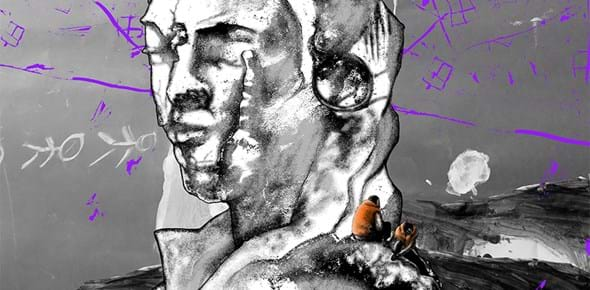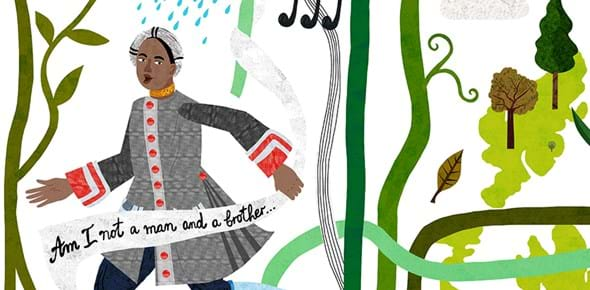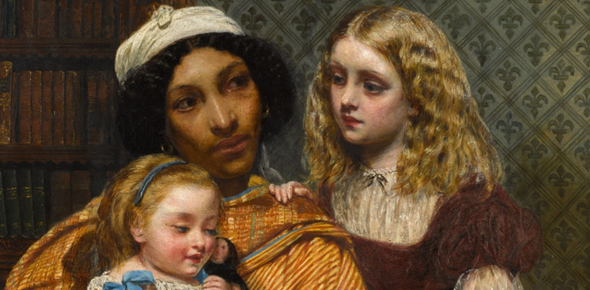Revealing and rethinking our home
The Museum of the Home is housed in almshouses built in 1714. The money to build them came from Sir Robert Geffrye who amassed a large fortune, partly from his active investment in the forced labour and trading of enslaved Africans.
There is a statue of Geffrye on the almshouse building, there is a monument to him in the chapel, and he is buried in the almshouse graveyard.
The continued veneration of him is deeply painful for many people, including members of our local community, our visitors, our partners, and our staff.
We want to be open and honest about the legacy of our buildings
A history of Geffrye's fortune
The profits Geffrye made from his investments in transatlantic slavery were very likely sufficient to fund his legacy to build the almshouses that now house the Museum.
How Geffrye has been acknowledged across the historical site
There are multiple ways in which Geffrye's donation is acknowledged on the site; with a statue, monument, and his tomb.
Current position of the board
In October 2021 the Board of Trustees of the Museum voted to move the statue of Geffrye.
We want to continually rethink how we use the buildings
One of the ways we can do this is by telling a more diverse story of the British Home through permanent displays and programming. We have been making progress, but there is lots more to do.
Galleries and Programming

Home Galleries
Our new Home Galleries tell a more diverse story of home and home life, with a focus on personal stories. The ambition has been to create a welcoming space for all. The galleries are wheelchair-accessible, with BSL-interpreted film content. Feedback spaces hope to capture missing voices, to drive change and development.
Home Galleries
1970s Front Room
Artist Michael McMillan curated this permanent version of the West Indian Front Room to replace the previous 1960s room. The West Indian Front Room was one of the most popular exhibitions ever staged at the Museum. The new room has become central to our Rooms Through Time and will be expanded in 2024.
A front room in 1970
Collections display
A selection of the Museum's extensive library and archive next to our Collections Library. With information about Geffrye's fortune and the triangular trade of enslaved Africans, it also covers life as an almshouse resident and objects found during the recent redevelopment.
Our collections
Waiting for Myself to Appear
This is a film commission by Michael McMillan exploring ideas around black women's identity, gender, diaspora migration and home. It is written and directed by Michael McMillan, performed by Esther Niles with music and visuals from the multidisciplinary duo Dubmorphology. Available to watch during guided tours of Almshouse 14.
See more
Bearers of Home
Bearers of Home was an artist commission by BLKBRD Collective. These five double-sided banners, set on the Kingsland Road gardens, were a statement: a commitment to Hackney, London and the world that we bear witness to the many voices that make a home, a community and a society.

Rhymes Through Time
Rhymes Through Time is a multi-artwork installation created by children’s poet Valerie Bloom MBE and illustrator-as-historian Kremena Dimitrova. It explores diverse histories of home for a family audience through a combination of poetry and interactive design. Displayed throughout the Rooms Through Time galleries.
See moreWays of working

Real Rooms
There are many stories and voices missing from our Rooms and Gardens Through Time. We are working with our visitors and communities to understand what the rooms and gardens could look like if we were to rethink who they are about. Seven new rooms, co-curated with the community, are set to reopen in summer 2024
Real Rooms
Young Poets
Alongside Hackney poet Anthony Anaxagorou, young people aged 15 to 25 years old from East London contributed to society and cultural debates through poetry. The Young Poets co-produced an anthology of new work responding to the statue of Robert Geffrye that stands on the front of the Museum’s buildings.
Listen to Lessons in Gravity
Collecting in new ways
In order to redress gaps in our collections we are prioritising the migratory and marginalised experience and working with our community. We are collecting and telling the stories that are missing from our collection as part of the Real Rooms project.
Collecting in new ways
Making lasting change
Achieving a workforce that's representative of modern London by 2025 and transforming working practices to enable change.
Representative workforce